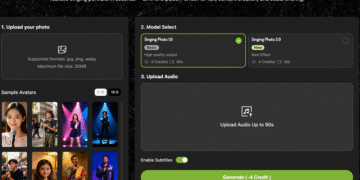Worried about failing your Canadian driving test? You’re not alone. Many learners pass the written exam only to struggle with the road test, often because they don’t know what counts as an automatic fail.
The truth is, not all mistakes are treated equally. Some errors are minor and won’t break your test. Others? They’re considered disqualifying faults — and they can instantly end your test.
Let’s walk through the most common disqualifying faults so you know exactly what to avoid on test day.
- Disobeying Traffic Signs or Signals
This is one of the fastest ways to fail your test.
Running a red light, rolling through a stop sign, or ignoring a “yield” sign shows a lack of understanding — and puts others at risk.
Examples include:
- Failing to stop at a red light or stop sign
- Ignoring lane direction signs
- Turning when signs clearly say not to
These aren’t just mistakes. They’re safety violations — and your examiner won’t let them slide.
- Not Yielding the Right-of-Way
Yielding properly is a basic rule of safe driving. Not doing it can lead to crashes — or at the very least, angry honks from other drivers.
Situations where right-of-way matters:
- Four-way stops
- Pedestrian crossings
- Merging lanes
- Uncontrolled intersections
If you go when you’re not supposed to, or hesitate too long and create confusion, it can be marked as a disqualifying fault.
- Unsafe Lane Changes or Turns
Changing lanes might seem simple, but it’s a key area where examiners see dangerous habits.
Instant fails can occur if you:
- Don’t check your blind spot
- Drift into another lane
- Cut off another vehicle
- Turn from the wrong lane
A safe lane change means checking mirrors, signalling, checking your blind spot, and moving smoothly. Every. Single. Time.
- Speeding or Driving Too Slowly
Driving over the speed limit is a common reason for failure, but going too slow can also be dangerous.
Examiners want to see that you understand and adapt to speed limits appropriately.
Disqualifying examples:
- Going 10+ km/h over the limit
- Driving significantly below the limit in normal conditions
- Not adjusting your speed in school zones or during weather changes
Safe speed shows confidence and awareness — two key things your examiner is watching for.
- Failure to Check Blind Spots
One of the most overlooked errors — and one of the most critical.
Every time you change lanes, merge, or pull away from the curb, your examiner expects a head check.
Mirror checks alone aren’t enough. You must:
- Glance over your shoulder
- Clearly show awareness
- Repeat the check if conditions change mid-maneuver
If you skip it even once during a critical moment, that could be the end of your test.
Want to build strong habits before test day? Practice now using real Canadian road scenarios, sample questions, and prep tips tailored to your province. The better prepared you are, the fewer surprises you’ll face on test day.
- Improper Use of Signals
Turn signals are how you communicate with other drivers. Forgetting to use them? That’s a red flag.
Disqualifying situations:
- Not signalling when turning or changing lanes
- Leaving your signal on after a turn
- Signalling too late
Examiners want to see clear, timely communication, so make signalling a habit during every drive.
- Failure to Stop for School Buses
This is a big one in Canada, and it comes with major penalties even outside the driving test.
When a school bus has flashing red lights and a stop sign out, you must stop, no matter what direction you’re coming from (unless there’s a median).
Failing to do this is not just an automatic fail — it’s a serious traffic offence.
- Poor Control of the Vehicle
Driving isn’t just about knowing the rules — it’s about handling your car with confidence.
You may be disqualified if you:
- Stall repeatedly
- Hit the curb hard
- Forget to cancel the handbrake
- Struggle with basic steering or braking
Smooth, steady control tells the examiner you’re test-ready — and more importantly, road-ready.
Also see: Top Benefits of Learning from a Lady Driving Instructor
Final Thoughts: Know What to Avoid
The Canadian driving test isn’t designed to trick you. It’s there to make sure you can drive safely and responsibly. That’s it.
To give yourself the best shot at passing:
- Understand the disqualifying faults
- Practice with purpose
- Stay calm under pressure
- Prepare with realistic resources
And remember — not all mistakes are instant fails. You’re allowed small slip-ups. What matters most is how safely you drive overall.
So don’t let nerves get the best of you.











































































